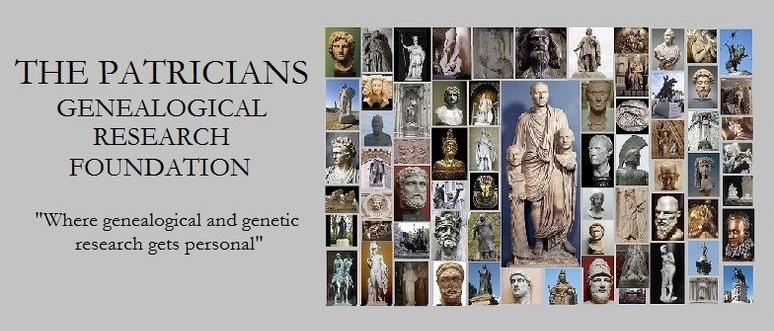




Sigmund Freud had reason to believe that Akhenaten and Moses were the same. Both were family cast-offs and both were the first to embrace monotheism during the same time period in Egypt.
Akhenaten was the one and only High Priest of Amarna, which wasn’t a titular designation by any stretch of the imagination. His spiritual and metaphysical powers rivaled and in some cases exceeded that Solomon was known to have possessed. However, finally realizing the persecution of his followers by Egyptian priests wasn’t going to abate, he was forced to embrace traditional Egyptian religious beliefs for their sake.
Akhenaten’s kind of peculiar physique may be attributed to inbreeding. His father, Amenhotep III, may have fathered him with his aunt, Kiya Tadukhepa Mery Amon. This possible instance of Royal incest, though, wouldn’t have been an extraordinary cause for scandal because Pharaohs were highly covetous of their Royal bloodline, especially when no one else was found to be suitable at the time. Still, in-breeding often produces physical abnormality in affected issues as we see in Akhenaten’s case. Other Egyptologists, though, assert that Akhenaten purposefully ordered his body rendered to affect an androgynous quality of himself as a Sun god.
His granddaughter, Scota bint Smenkhkare, was the namesake of Scotland. Her son, Gáedal Glas, was the namesake of Gaul. They both fled Egypt sometime after Akhenaten’s death with other disciples of Amarna.
All the Milesian High Kings of Ireland, starting with Ir himself, are descendants from Akhenaten and Nel Nemnach mac Phoeniusa Farsidh, the Scythian architect who helped design and build the Tower of Babylon.
He’s ranked #160 in Hart’s Most Influential People in History – Top 500 List (125).
Related ancestral blog articles:
Galamh mac Bile “Míl Espáine” (1853 – 1806 BC) Father of the Irish Race 6GGF agnatic
Niall Mor Noígíallach of the Nine Hostages (380 – 454) 5GGF agnatic 21
Crínán of Atholl (980 – 1045) Primogenitor of Dunkeld Dynasty 5GGF agnatic 34
Amenhotep IV “Akhenaten”, 10th Egyptian Pharaoh of 18th Dynasty
Birth in Thebes, Alexander
Death 1335 BC in Atonville, Akhetaren, Middle Nile, Egypt
Niall Mor Noígíallach of the Nine Hostages (380 – 454) his agnatic ancestor Galamh mac Bile “Míl Espáine” (1853 – 1806 BC) Father of the Irish Race were direct descendants of Akhenaten.
SOURCES
“THE PREDYNASTIC AND MOST EARLY DYNASTIC EGYPTIANS WERE CAUCASOID-EUROPEANS”
Pharaoh Akhenaten – Under the Influence
Scota: Mother of the Scottish People
The pharaoh’s daughter wasnthe mother of all Scots
Cingeris Hyksos Pharoah of Egypt
Half of European men share King Tut’s DNA
BIBLIOGRAPHY
Amarna Sunset: Nefertiti, Tutankhamun, Ay, Horemheb, and the Egyptian Counter-Reformation
The Patricians, A Genealogical Study – Ebook Editions (Epub, PDF & Kindle) US$7.95



11 replies on “Akhenaten – Amenhotep IV – Moses (died 1335 BC) 18th Dynasty Pharaoh of Egypt, Founder of Monotheism”
[…] Akenhaten/Amenhotep IV (died 1335 BC) Pharaoh, Founder of Monotheism […]
LikeLike
[…] Amenhotep IV (died 1335 BC) Pharaoh, Founder of Monotheism […]
LikeLike
[…] Amenhotep IV (died 1335 BC) Pharaoh, Founder of Monotheism 2GGF d […]
LikeLike
[…] Akhenaten – Amenhotep IV (died 1335 BC) Pharaoh of Egypt, Founder of Monotheism […]
LikeLike
[…] Akhenaten – Amenhotep IV (died 1335 BC) Pharaoh of Egypt, Founder of Monotheism […]
LikeLike
[…] Akhenaten – Amenhotep IV (died 1335 BC) Pharaoh of Egypt, Founder of Monotheism […]
LikeLike
[…] Akhenaten – Amenhotep IV (died 1335 BC) Pharaoh of Egypt, Founder of Monotheism […]
LikeLike
[…] Akhenaten – Amenhotep IV – Moses (died 1335 BC), 18th Dynasty Pharaoh of Egypt, Founder … […]
LikeLike
[…] Akhenaten – Amenhotep IV – Moses (died 1335 BC), 18th Dynasty Pharaoh of Egypt, Founder … Brian Boru (941 – 1014) Founder of the O’Brien Dynasty of Irish High Kings – 28th, 30th & 33rd Great-Grandfather Richard “Strongbow” de Clare, 2nd Earl of Pembroke, Earl of Striguil (1130 – 1176) Leader of the Norman Invasion of Ireland, Lord of Leinster, Justiciar of Ireland – Author’s 24th, 27th & 31st Great-Grandfather Deacon Edward Collins, Gent. (1603 – 1689) – Clerk of Writs, Massachusetts General Court Representative, Merchant, Landowner, 1st Deacon of Congregational Church of Cambridge – 10th Grand-Uncle & 10th Great-Grandfather Columba Cilla of Iona, Apostle-Saint (521 – 597) founder of Iona Abbey and Nunnery – Author’s 47th & 49th Great Grand-Uncle Crínán of Atholl , Mormaer of Atholl, Stewart of the Western Isles, Lay Abbott of Dunkeld (980 – 1045) Primogenitor of Dunkeld Dynasty, Descendant of Cenél Conaill Royal Dynasty and Cousin of St Columba – Author’s 28th, 29th, 30th, 31st & 33rd Great-Grandfather Galamh mac Bile “Míl Espáine” (1853 – 1806 BC) King of Galicia, Andalusia, Murcia, Castile and Portugal, Primogenitor of High Kings of Ireland and British-European Royalty, Father of the Irish Race – Author’s Great Grandfather (6 times) Mac Bethad mac Findlaích (ca. 1031 – 1057) King of Scotland, Eponym of Shake-speare’s “MacBeth” – Author’s 25th & 26th Great-Grandfather Melusine de Lusina (734 – 759) Princess of Southern Picts of Alba, Countess of Anjou, Dragon Queen – Author’s 35th & 38th Great-Grandmother Niall Mor Noígíallach of the Nine Hostages (380 – 454) King of Tara, 126th High King of Ireland, Captor of St Patrick of Ireland, Primogenitor of Uí Néill Dynasty – Author’s 43rd, 46th, 49th, 51st & 53rd Great Grandfather Sigge “Odin” Fridulfsson of Asgard (50 BC – 30 AD) Supreme Ruler of Scythians, 1st King of Scandinavia – Author’s 53rd, 55th & 57th Great-Grandfather Thorfinn “the Black” or “The Mighty” Sigurdsson, 18th Jarl of Orkney (1009 – 1064) – 26th & 30th Great-Grandfather Folio 53 from the Book of Leinster. Lebor Gabála Érenn is recorded in more than a dozen medieval manuscripts and the Book of Leinster is just one of the primary sources of text. Image: Dublin, TCD, MS 1339 (olim MS H 2.18) […]
LikeLike
[…] Akhenaten – Amenhotep IV – Moses (died 1335 BC), 18th Dynasty Pharaoh of Egypt, Founder … […]
LikeLike
[…] Akhenaten – Amenhotep IV – Moses (died 1335 BC), 18th Dynasty Pharaoh of Egypt, Founder … […]
LikeLike